Knowledge to let you go further
Venturing out to some location just the other side of the Black Stump is an exciting prospect for many however having a basic mechanical understanding, carrying a selection of the right tools and being able to think outside of the square are essential in the event that you have a break-down (and we are not referring to the mental kind). Being equipped with the right knowledge equips you to handle many situations and potentially being able to get yourself out of a bind. Even if you don’t get to use these skills, they make for great general knowledge at your next trivia night.

There is something about waking up in a location and not having another living soul around you (apart from your significant other and offspring) that is a great appeal to many travellers. Working to your own timetable and being able to adjust it without the need to consultant others is quite liberating and one of the main reasons why traveling solo is gaining popularity. Going it alone needs to be approached with caution, ensuring that you are well equipped for the trials and tribulations of being on your pat malone.

Have a check-list
Develop a daily check list that sees you walking around your vehicle looking for potential issues. Look for anything that is coming loose, starting to squeak or showing signs of wear. Prevention is much better than the cure.

Keep some tools handy
Have a basic tool kit in a tool roll. Keeping it handy (we are assuming you also have a comprehensive toolkit which is securely stowed away) makes it easy to resolve small issues as you find them while conducting your daily checks.

A good tarp
Invest in a good quality canvas tarp. It will be expensive BUT it will last a lifetime if looked after. A good canvas tarp is a virtual Swiss Army Knife in its own right. It can be used as a shelter, as a ground sheet (when you are crawling under the car doing your daily checks), as a barrier for the front of the vehicle when doing a water crossing as well as keeping loads dry on the trailer or roof rack.
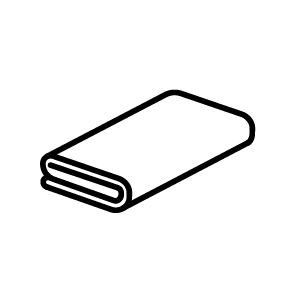
Shade cloth
A small roll of shade cloth is invaluable when travelling through spinnifex (or if you encounter a plague of locusts). It can be secured across the front of the vehicle to protect the radiator from getting clogged up with grass seeds and other debris.

Don't forget the cable ties
They speak for themselves. Having a selection of sizes means that there is almost nothing that cannot be secured in place.

Monitor your tyres
Many new vehicles now come with tyre monitoring systems. If you don’t have one then it could be worth while investing in one. A slow leak can turn from being a nuisance to trip-ending very quickly.
It also a good idea to check the manufacture date of your tyres. Anything older than 6 years should be swapped out as you will have a hard time getting anyone to work on them after this age.

Dual battery
If you are travelling solo then you probably already have a second battery installed. Never wanting to assume however, it is a good idea that you have checked that you can start your vehicle from it (before you actually need to start from it) or have another means of jump starting a flat battery. We carry a set of jumper leads (heavy enough to jump start a D9 from the weight of the cables) AND a portable jump starter. Making sure the jump starter is charged is also a good idea.

Fuel
Bad fuel is a quick way of ending any trip. Ensure that you are carrying a couple of spare fuel filters and even invest in a fuel filter funnel to ensure any fuel used from jerry cans is not contaminated.
You can also invest in pre-filter kits as an added level of protection but you should also check to see if this effects your new car warranty before hand.
Know how to reset any fuel alarms, swap out fuel filters and drain any pre-filter kit installs before heading off.
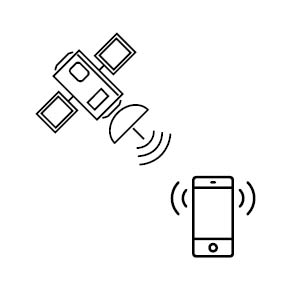
Communications
You may not want to be contactable but having a means of calling for help or letting loved-ones know of any changes to your itinerary can literally be the difference between life or death.
We are spoilt for choice with options for remote communication. Satellite phones, satellite communicators, PLBs and the ever reliable HF radio all have their pros and cons. It’s always best to have several means of communicating in the event that some of your gear decides to pack it in while away.
Spending some time checking over your vehicle is time well spent. Have a mechanic who specialises in 4WDs to give your vehicle a thorough check before departure in worth every cent.

Inspect
All belts and hoses for wear and tear. If the items are more than 2 years old consider swapping them out with new ones. The old belts and hoses, if still in good condition, can be carried as spares.

Look
Weeping fluids, small cracks in body or bar work. Loose battery cradles and unrestrained wires can all result in a catastrophic failure when experiencing unrelenting corrugations.

Power
Check your batteries and ensure that they hold charge. It is worth considering swapping out your crank battery with a new one if it is older than 12 months and you are heading off to a very remote location.

Tread
Your tyres should have at least 50% tread remaining. if not, considering replacing with new tyres. Deeper tread offers more protection from punctures. Also check the manufacture date of all tyres, ensuring nothing is older than 6 years (this is more critical on trailers, campers and caravans)
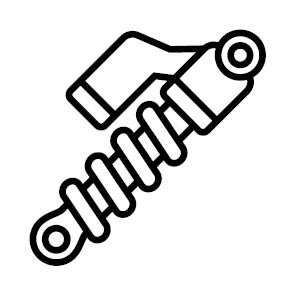
Suspension
Check all suspension components including the shock absorbers, springs, tie rod ends, ball joints, CVs and bushes. Replace anything that is suspect.
Having a collection of tools can be the difference between waiting for a tilt tray to come and get you or driving yourself out after a mechanical failure. The following list is a guide and your individual tool requirements should be assessed based on the location of your trip.

Tool list
- allen keys
- socket and wrench set
- screwdrivers – blade and Phillips
- hammer
- pliers and vice grips
- jumper leads / jump starter
- duct and electrical tape
- water dispersant and lube (WD40)
- electronic contact spray
- cable ties (multiple sizes)
- twitching wire
- ratchet straps
- glue and silicon
- gloves
- multimeter
- gas soldering iron and solder
- jacking plate
- jack stand
- cordless drill and charger
- cordless angle grinder
- drill bits
Even if you don’t know how to fit some of the spares that you are carrying, chances are that someone will come along who does.

Equipment and spares
- radiator hoses and belts
- spare UHF aerial
- spare fuel, air and oil filters
- fuel tank and radiator repair putty
- coolant
- engine, transmission and diff oil
- workshop manual for vehicle
- fire extinguisher and fire blanket
- fuses to suit vehicle
- lengths of electrical wire in varying sizes
- spare switches and relays
- assorted electrical terminals
- crimping tool
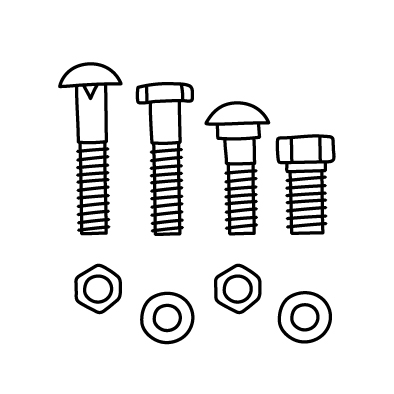
Also consider
- a mixture of suitable washer, nuts and bolts
- 1.5m length of 30mm x3mm angle iron
- 1.5m length of 30mm x 3mm flat bar
- 500mm lengths of 8mm and 10mm threaded bar
- 12 volt welding kit, including mask, made for battery leads and welding hand piece
We all travel with a collection of devices that consume power and keeping those devices charged can be a constant battle. Ensuring you have enough battery capacity and the means to keep them fully charged is a calculation that needs to be done before you head out.

Read the labels
Each of your devices will have a label that details their power consumption. Record each item and tally up the total. Ensure you are using either watts or amp hours for both consumption and storage.
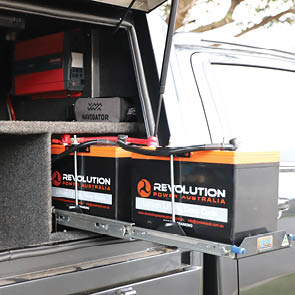
Plan your battery storage to suit
Knowing how much power you are going to consume allows you to easily plan how much battery storage is required.

How to recharge
Knowing your consumption and storage will then allow you to calculate how you are going to charge your batteries. When travelling, you have 4 options:
- DC-DC charge from your vehicle
- DC-DC charge from a solar panel
- 240 volt charge from a generator
- 240 volt charge from mains power
REDARC have a handy calculator that can assist you with planning out your 12 volt system.
Water is critical to life but it is bulky and is quite heavy (1kg per litre for practical purposes). Having enough potable water is the single biggest reason trips are cut short when travelling in remote areas. Here are some tips to extend your water supply without getting yourself dehydrated.

Washing dishes
Carry a spray bottle with a water and detergent mix. Spray non-greasy dishes and cutlery with it and wipe clean using some paper towel. Let the paper towel dry out and use it for fire lighting.

Staying clean
Having a wash can soak up your precious water supply. Baby wipes can help keeping clean when water is low, ensuring that you dispose of them properly when finished. Again, they make great fire lighters when dried out.

A spray bottle for every occaision
Extra spray bottles can be used for disinfectant solutions or as additional cleaning mixes. You could even give yourself a refreshing “shower” with one.
Many people switch their fridge(s) on and then forget about them until after the trip is completed. Making sure that the conditions where your fridge is located are as optimal as possible can reduce power consumption and help the fridge stay colder for longer.

Turn it up
During the day when you are driving or have solar pumping into your battery bank, turn the fridge up so it is a little colder. Turn it down in the evening after you have finished meal prep and are accessing it less. Being colder will reduce the amount of times the fridge needs to cycle, thus reducing the amount of power it consumes overnight.

Fill it up
A full fridge retains its temperature easier than a partly full one. If you need to load up the empty space with water bottles then do it. The items inside the fridge will retain their temperature much longer than just air, acting like ice bricks.

Thaw items in your fridge
If you have frozen meals that need to be thawed, plan ahead and add these items to your fridge space ahead of time.

Block out the sun
Keep your fridge in the shade as much as possible. Uses towels or window shades to prevent direct sunlight heating up the outside of the fridge. Also ensure that there is good ventilation.
Food can take up quite a bit of space, especially inside a fridge or freezer. Think about the packaging that your food is in and look for alternatives that reduce the air around them. There is no point keeping the air cold.

Pre-package
Pre-prepared meals that have been vacuum sealed makes meal prep easier but allows more food to be packed into the freezer. Ensure you clearly label each package so that you know what you are getting for dinner.

Heat sources
Where possible an open fire can be a great alternative to cooking on a gas stove. Preserve your gas supply for when you need it and utilise a fire where permissible.

Get back to basics
With a little practice and the right basic ingredients you can quickly whip up some amazing meals. Practice making a tasty damper or even scones. Takes it a little further and work up an apple pie or sausage rolls. Many ingredients don’t need refrigeration and take no time at all to prepare.
We suggest getting yourself some good cookware that is equally home on a fire or gas stove as well as Jo Clew’s Camp Oven Cooking.
If we were to take every conceivable spare part and tool away with us, we would more than likely require the services if a road-train to carry everything. Having some basic knowledge and thinking outside the square can enable you to fabricate your way out of some situations. Not everyone carries gasket paper with them and this method of fashioning a gasket was observed by our own Geoff Lewis while working on a drill rig. It reinforces the need to always carry a notebook and a good porous cardboard box with you when you venture out.

Identify the surface where the gasket is required
Mark and cut out the outline of the surface using a sharp knife. The thick cover of a notebook, cardboard box or even sheets of paper can potentially be used. Don’t discount what is in the pantry either.

Add some grease
Grease up both sides of the “gasket” with high temperature bearing grease or soak in light machine oil overnight. Soaking the “gasket” in oil overnight allows the material to soak up the oil like a sponge. When placed into position, the new “gasket” will partly dry and should produce a good seal.

Don't forget to replace as soon as possible
Get to the nearest mechanic and get the issue fixed ASAP.
Radiators are kind of important. They keep the engine cool and prevent catastrophic failure. Putting a hole in one is quite common. Geoff Lewis resorted to fixing a leaking radiator using some basic pantry items.

A hole in my bucket
Geoff discovered that he had two leaking cores at the bottom of his 6 litre radiator.

A simple recipe
For this solution, Geoff took 2 eggs, cracked them into the radiator and then added a tablespoon of cracked pepper.
Be sure to get your radiator seen too ASAP.
Wire in all forms makes the world go round, literally. Wire is found in some form in almost everything around us … except when you break down in the middle of no-where. Geoff advocates carrying some of this magic stuff.

Fencing wire
It’s not kosher to go and cut a section of wire out of a fence however you may come across strands of wire where fences have fallen into disrepair. A better option is to carry a rolled up length. A good pair of fencing pliers and a large, flat blade screwdriver can be enough to secure almost anything.

Electrical wire
Apart from being able to make running repairs to electrical cable, electrical wire is made up of small strands of copper wire. Removing the insulation and pulling out individual strands can resolve a myriad of problems such as missing split pins, temporarily replacing a blown fuse (if you have run out and it is a matter of life or death) or even reattaching an exhaust to the chassis.

Dental Floss
If you have ever gotten some dental floss stuck in between a tooth you will know all too well how strong that stuff is. It can serve duty to repair stitching on swags, bags or even clothes.
The trick is to ensure you have a selection of sewing needles in your first aid kit.
All modern vehicles need a 12 volt battery to start. When the battery goes flat and you have either forgotten to bring your jump-starter pack (or forgot to charge it) or don’t have any jumper leads then Geoff’s torch solution might be your saviour.
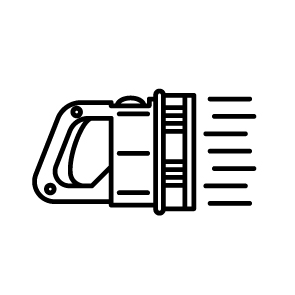
Grab a dolphin
Not the swimming kind but the cheap, near indestructible torch type. Having one in your vehicle, along with a spare battery might be your salvation.

Wire in series
Take the two 6 volt batteries and wire them positive to positive and negative to negative. This turns your two 6 volt batteries into one 12 volt battery.

A small boost
The added power may be enough if the battery has fallen just below the starter threshold. It’s worth a shot.
Having a goof quality jack in your vehicle goes without saying. Many new vehicles come with a “scissor-lift” style jack and it is constantly suggested to us to ditch it and replace it with a bottle jack. It’s also worth noting that if your jack is stored somewhere safe that you can still get to it when the vehicle is loaded. (I may or may not have installed a drawer system to our LC200 only to discover that the jack was stuck behind a panel and only accessible if I removed the entire drawer system). Although rare, jacks can and do fail and if you find yourself in the middle of no-where and with no other choice then this might be a solution.

Warning
This can be very dangerous and should only be attempted if there is no other option. Ensure that no part of your body is under the vehicle and anyone not involved is kept well clear.
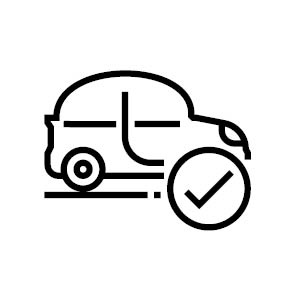
Secure the vehicle
Ensure the handbrake is applied and the vehicle is in gear. Chock the wheels as an added precaution.

Loosen
While the wheel is still on the ground, loosen each enough like you normally would when changing a tyre.

Build your support
Manoeuvre rocks or solid logs under the diff or jacking point. Ensure that you have enough support to take the weight of the vehicle.
Start digging
Dig around the tyre, starting from the from the outside and work your way inwards, ensuring that you do not have any part of your body under the car. As the hole gets bigger and deeper, the car’s weight should be taken up by your improvised vehicle stand and the wheel should become suspended.

Change it
Change the tyre and then refill the hole with as much dirt and rocks that you can.
Ensure that wheel nuts are tightened back up once you have weight on the wheel.

Drive off
Carefully drive off your improvised stand. Once the hole is filled up, you may need to dig (using a long handle shovel) some of the soil away from your vehicle stand so that it collapses when you drive off.
Unless you are carrying a spare, a leaking radiator hose can quickly become a major issue. You are most likely not going to stop the leak but you can slow it down enough that you can get to somewhere it can be replaced.
Cool down
Turn the car off and let it cool down. This is a great time to make a cuppa and sit in the shade somewhere for a while.
Dry it
Make sure the hose is clean and dry. Baby wipes are a quick way to get rid of dirt and road grime and any potential oil or grease contaminants on the hose.
Wrap it
Once the car is cool enough, use electrical tape (or any sort of tape you have) over the hole, extending the coverage at least 10cm either side. Wrap it as tightly and with as many layers as possible. Your radiator pressure will most likely be somewhere around 15-18psi.
Securing something hard over the hole and fixing it in place with tape or even cable ties before you wrap it may also assist with slowing down the pressure blowing the wrap off.
